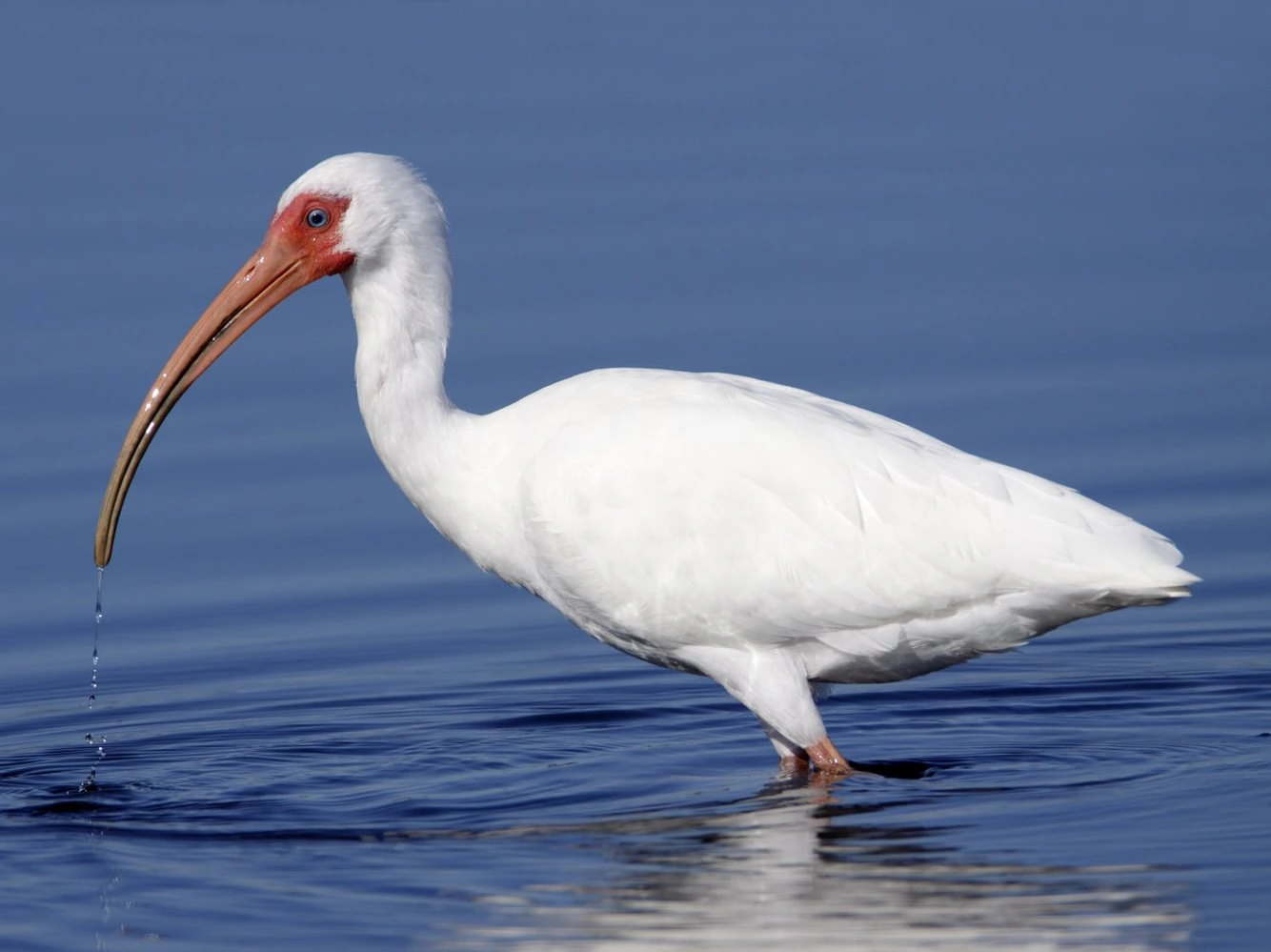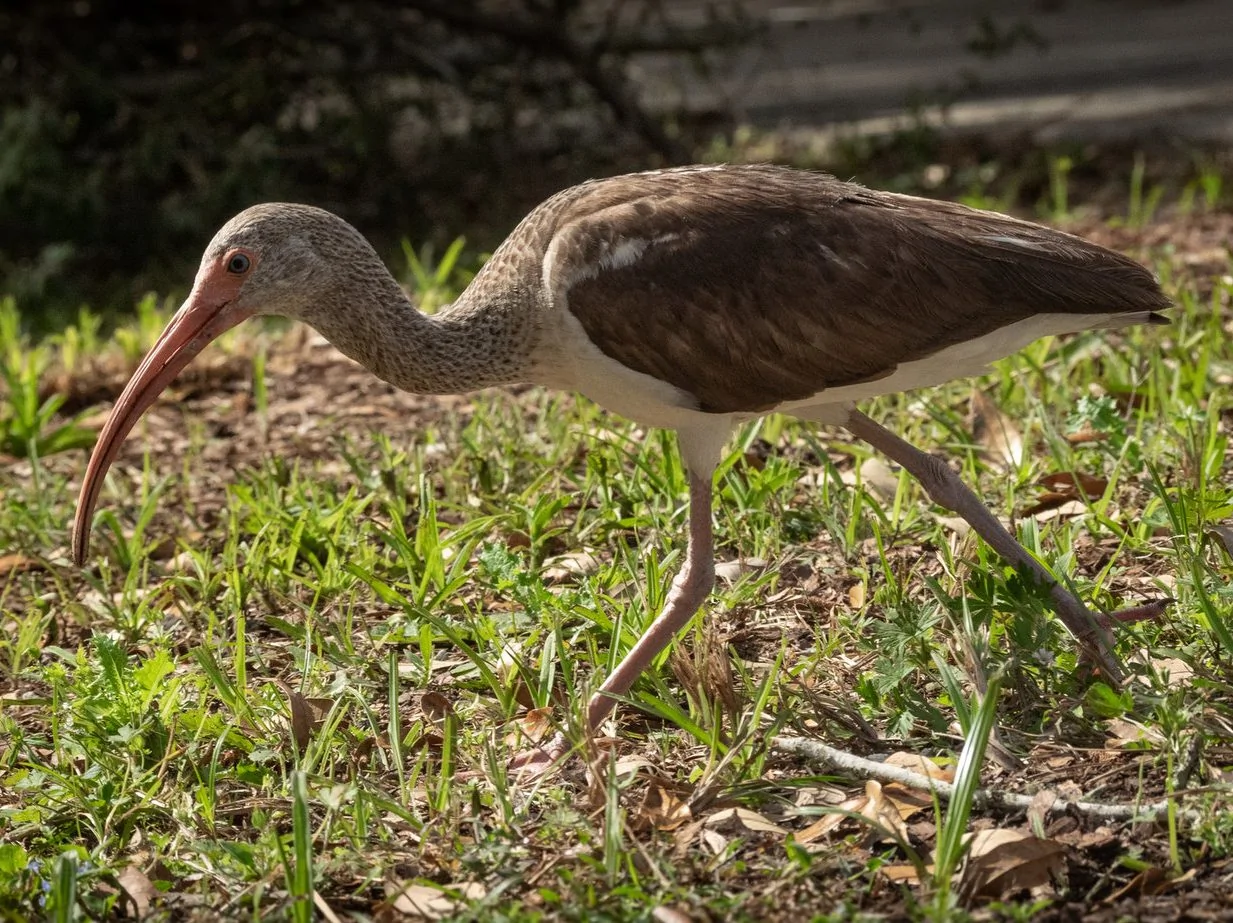

American White Ibises are medium to large-sized birds that have all-white bodies. Their distinct, bright pink facial skin, large downward-curved bill, and long legs easily identify them.
These same physical characteristics turn scarlet red during the breeding season. Their eyes are blue. They also have black tips on their wings but these can only be seen in flight.
Male and female American White Ibises look similar but juveniles are brown on their heads, wings, and back, have a pale brown streak on their necks, and they are white underneath.
- Eudocimus albus
- Length: 21 – 27 in (53 – 69 cm)
- Weight: 36.8 oz (1043 g)
- Wingspan: 21 – 27 in (53 – 69 cm)
Range
American White Ibis are resident all year around the Gulf Coast and southern Atlantic coast but may move inland slightly during the breeding season.
Habitat And Diet
You can find American White Ibises in wetland environments. They prefer freshwater marshes, coastal estuaries, mangroves, flooded pastures, mudflats, and swamps. While they wade in shallow water, they are often seen on lawns and parks.
American White Ibises forage for food in coastal wetlands during the nonbreeding season but prefer freshwater wetlands when breeding. They probe the mud with their large bills in search of insects and crustaceans.
When they sense that prey is near, they will pinch it and pull it out. This is how they catch most of the crayfish, earthworms, and crabs. They may also stab other prey like fish, frogs, snails, and newts.
American White Ibis Call:
Nests
Nests of American White Ibises are usually found in colonies. The females choose the location, usually in forks of live or dead trees, up to a height of twelve feet above the ground. If no suitable trees are found, they will instead build their nest in clumps of grasses or sedges.
The male usually gathers the sticks for the nest. He may pick it up from the ground or from a dead tree or steal it from another’s nest. The female then constructs the nest, arranging the sticks into a messy platform.
She then lays two to four eggs and both parents share in incubating their eggs. The parents take care of the young for two months including after they’ve left the nest.
Fun Fact:
When American White Ibis’s prey is muddy, they will wash the mud off first before eating it.







